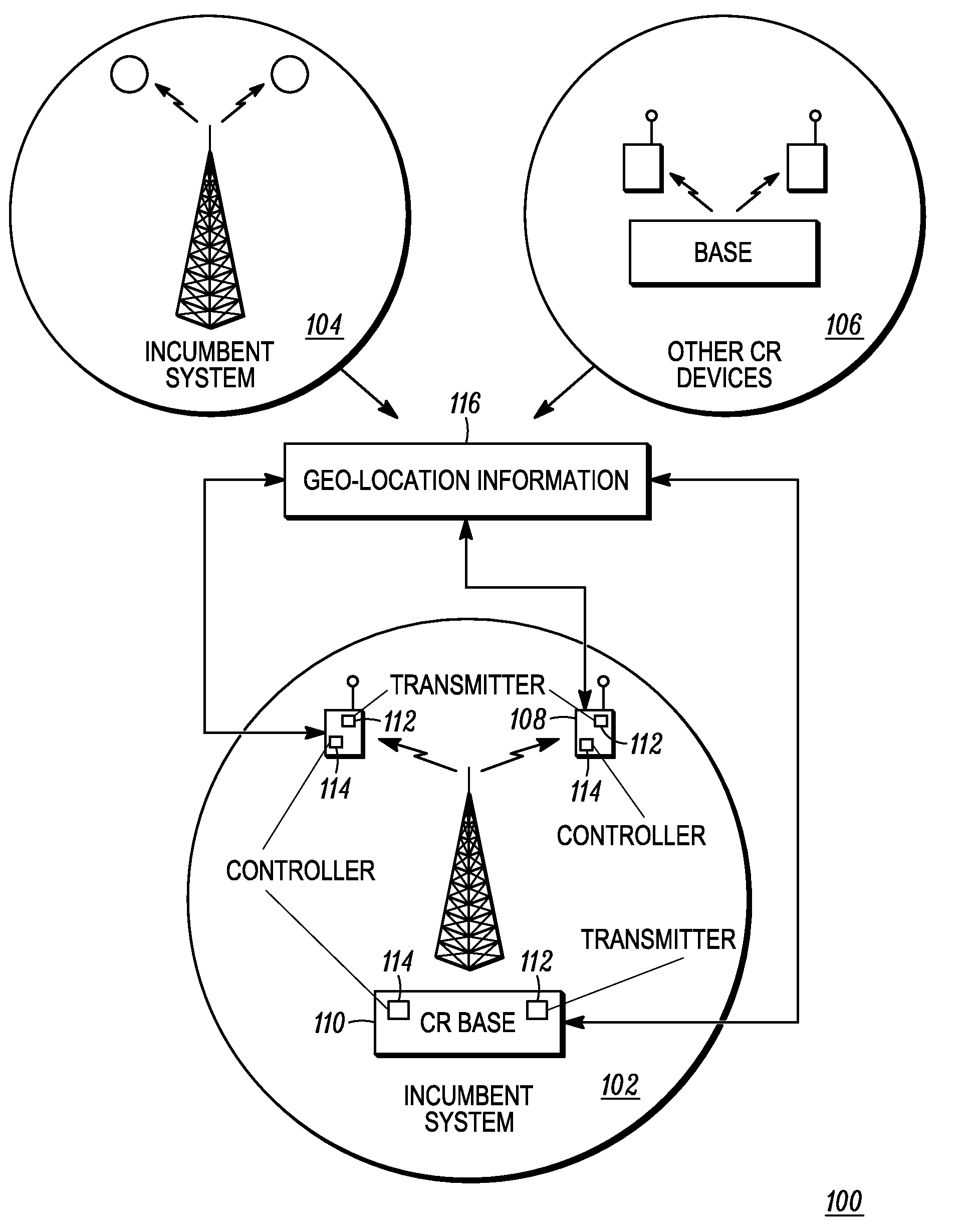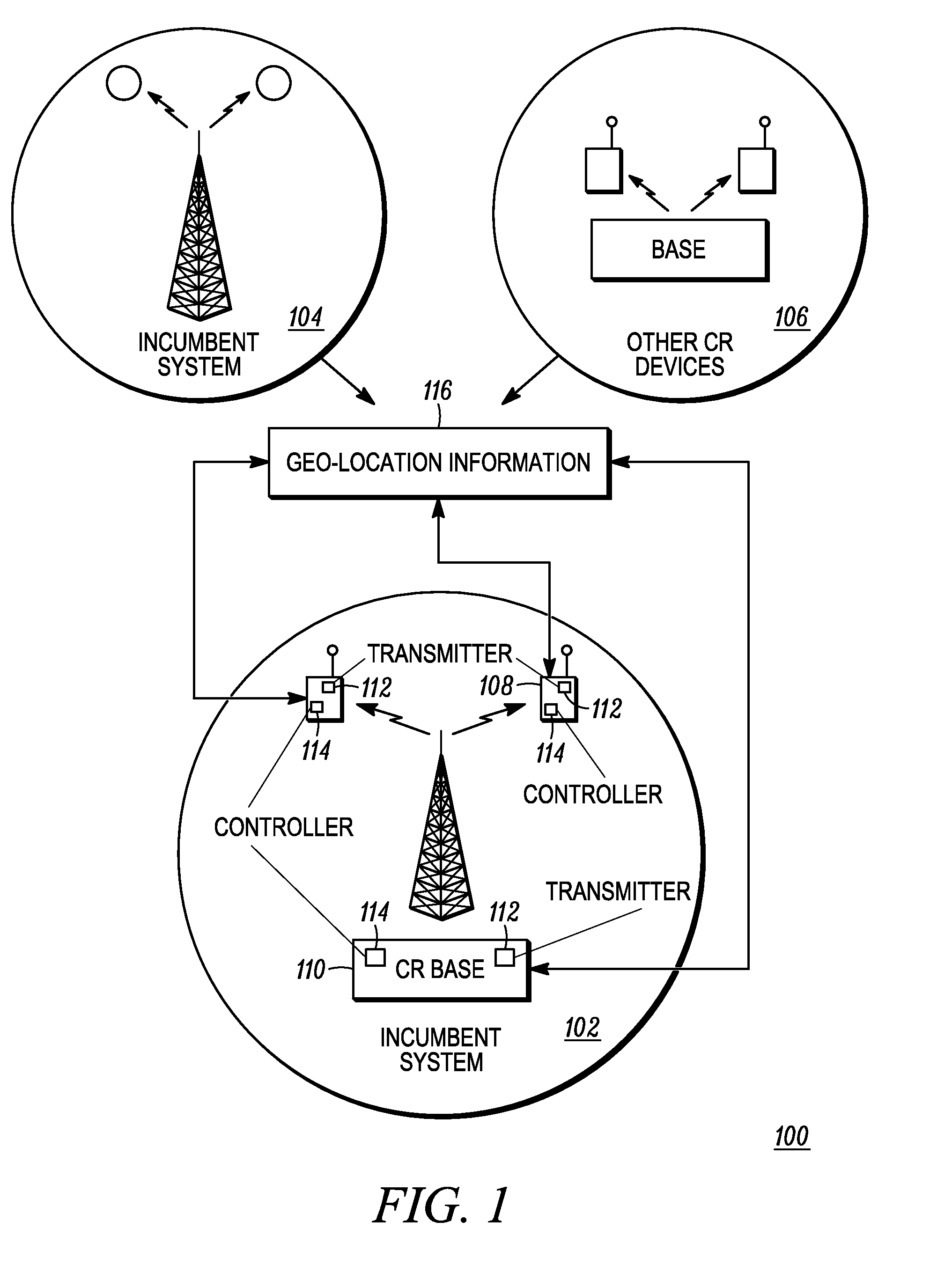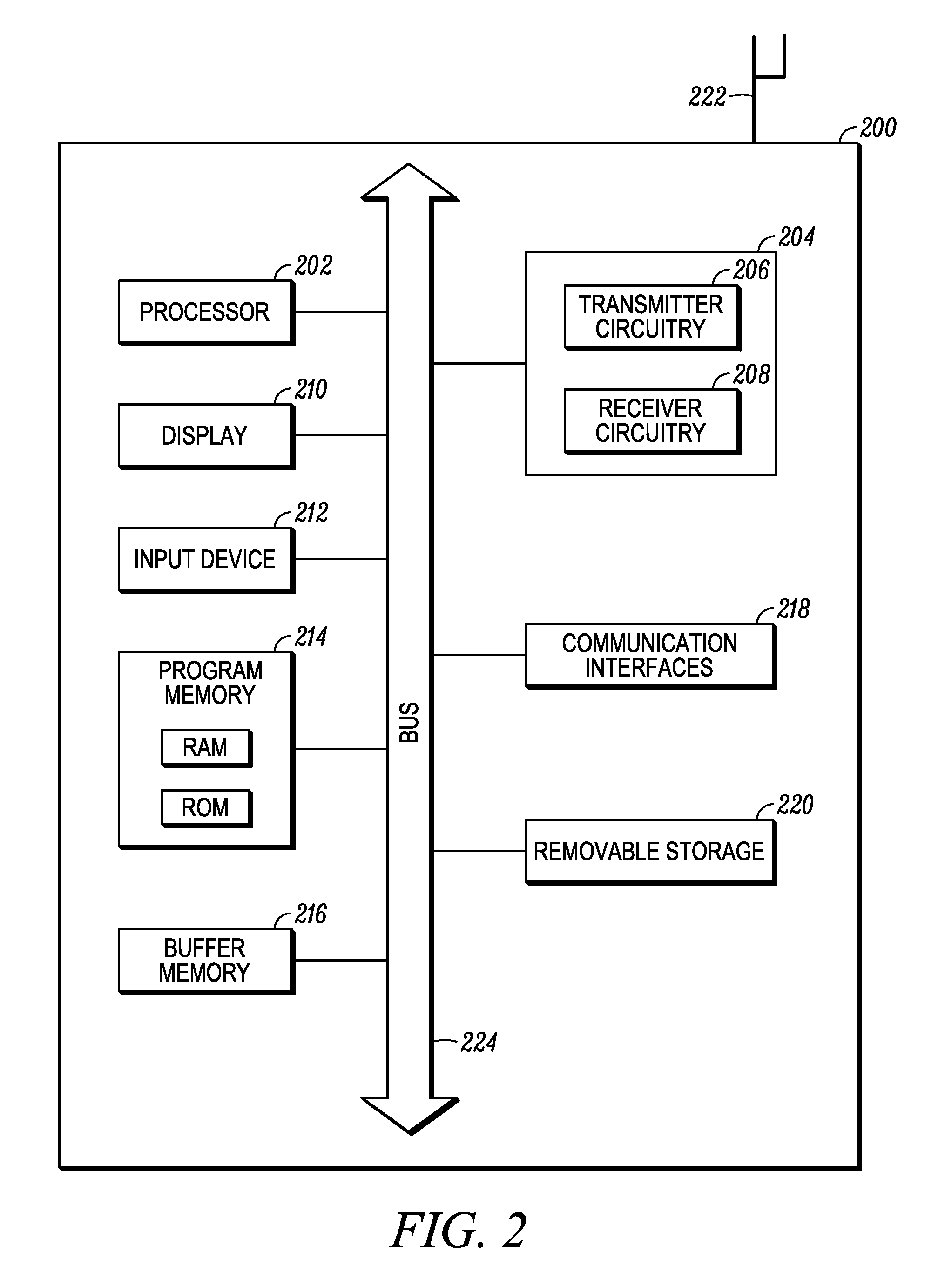Method for database driven channel quality estimation in a cognitive radio network
a cognitive radio network and channel quality technology, applied in the field of communication systems, can solve the problems of cognitive radio devices not being allowed to transmit co, presently not having accurate information about the actual usage of the spectrum, and not having geo-location databases
- Summary
- Abstract
- Description
- Claims
- Application Information
AI Technical Summary
Problems solved by technology
Method used
Image
Examples
Embodiment Construction
[0016]Before describing in detail the various embodiments of the invention defined by the claims, it should be observed that such embodiments reside primarily in combinations of method steps and apparatus components using a geo-location database containing incumbent and other secondary system information to adapt, modify or update operating parameters of a secondary system such as a cognitive radio system to protect the incumbent system.
[0017]One role of the geo-location database (also referred to herein merely as a database) is to protect incumbent systems from harmful interference from secondary systems. This is enabled as devices in the secondary system (secondary devices) access the database to determine open frequencies and other operating characteristics (e.g., maximum allowed transmit power level for the open frequency) for the frequency bands (also called spectrum) in which they operate. For example, for a secondary device to utilize TV white space (TVWS) in the United State...
PUM
 Login to View More
Login to View More Abstract
Description
Claims
Application Information
 Login to View More
Login to View More - R&D
- Intellectual Property
- Life Sciences
- Materials
- Tech Scout
- Unparalleled Data Quality
- Higher Quality Content
- 60% Fewer Hallucinations
Browse by: Latest US Patents, China's latest patents, Technical Efficacy Thesaurus, Application Domain, Technology Topic, Popular Technical Reports.
© 2025 PatSnap. All rights reserved.Legal|Privacy policy|Modern Slavery Act Transparency Statement|Sitemap|About US| Contact US: help@patsnap.com



